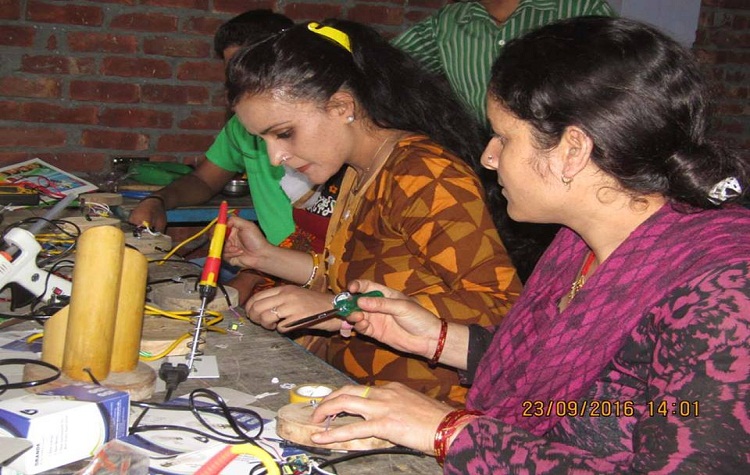The challenge is job creation, not skill development
To prevent students from dropping out of schools, government in 2015 launched the Skill Mission. While vocational training courses are helping students, experts say the need is to focus on job creation to keep pace with the huge influx of market ready youngsters.
One of the major reasons identified by government for students dropping out of schools is they consider it unnecessary as they do not see education helping them in imparting skills necessary for earning a livelihood. With an aim to contain this trend while making education more meaningful, the central government launched the Skill Mission in 2015. For the first time in country’s history, a Ministry for Skill Development & Entrepreneurship (MSDE) was formed to focus on enhancing employability of the youth through skill development.
In order to boost the sector, the government this year, set aside Rs 17,273 crore for skilling and employment generation, 16 percent higher than 2016-17’s revised estimate of Rs 14,870 crore. The amount is significant given the fact that nearly 10 million youngsters enter the country’s workforce every year.
“But more than skill development,” says Mridula Chandra, secretary and chief executive, Health & Social Development Research Centre (HSDRC), “the challenge before the government is to ensure that they are employed as job creation in the country has not kept pace with the huge influx of market ready youngsters.” HSDRC conducts various vocational training programmes as well as entrepreneurship development programmes for poor and needy people in the state of Rajasthan. “Why does government not identify fields wherein they can provide employment so that we can accordingly train the people? For example, government may decide that it will buy stationery only from a particular agency, probably set up the agency. This way, we (institutes) will train people for this particular sector only,” suggests Chandra.
“Why does government not identify fields wherein they can provide employment so that we can accordingly train the people?”
“Providing 100 percent placement to our students is a major challenge for us. Our students are mainly from migrant families or BPL. Their main concern is survival. Often, they are pursuing courses simultaneously with their meager salary jobs in the hope that it will lead to advancement of their career,” said Anil Landge, founder/director, Mera Parivar. The organisation has opened two youth centers in Rajiv Nagar and Ashok Vihar in Gurugram, Haryana, offering skill-development programmes and vocational training opportunities to youth in the age group of 15-25 years. It also runs an education center providing primary class education to the children of the marginalised community in the city. At present, around 150-300 primary school children are studying in this center.
Meanwhile, Delhi-based Centre for Youth (C4Y), is working towards empowering people directly by training them to be entrepreneurs. Alka Tomar, chairperson, explains, “Entrepreneurship gives more freedom to people. It also helps to halt the problem of youth migrating to cities in search of jobs.” At present, the organisation is working in the western UP where people have traditionally been involved with the handloom sector. But given the fact that youngsters here come from financially constraint families and hence prefer to take up jobs in other well-paid domains than risk their livelihood to the uncertainties of entrepreneurship, how willing are they to take up this challenge? “When we integrate the traditional art with modern technology, and teach them about e-commerce, apps, etc., they become interested,” said Tomar.
“Entrepreneurship gives more freedom to people. It also helps to halt the problem of youth migrating to cities in search of jobs”
Does it help that the government is enthusiastic about the sector and is also pumping huge amount of money to ensure employment and skill development of youth? In the budget presented recently, the government has offered to launch the next phase of Skill Strengthening for Industrial Value Enhancement (STRIVE) in 2017-18 at a cost of Rs 2,200 crore. Already, it has launched a special scheme for creating employment in the textile sector; and has now proposed a plan for creating employment in leather and footwear industries.
“The schemes are there but the awareness is lacking,” said Tomar.
Agrees Landge, “We would like to team up with government in their skill development programme but are unable to figure out how to associate without the help of middlemen.”
Chandra sums it best when she says, “We do hear about these schemes but they need proper implementation. For that, problems need to be understood and addressed. We need to have a platform where we can talk, and raise our concerns.”
You can meet the representatives of these and several such grassroots organisations doing exceptional work using digital tools at Prayag, a first of its kind digital India mela being organised by New Delhi-based Digital Empowerment Foundation, on Feb 25 at Surajkund, Faridabad. The article is the fifth of five part series that The Peeper Times, as the event’s Media Partner, is writing for Prayag.
Do you feel strongly about something? Have a story to share? Write to us at info@thepeepertimes.com or connect with us on Facebook or Twitter



